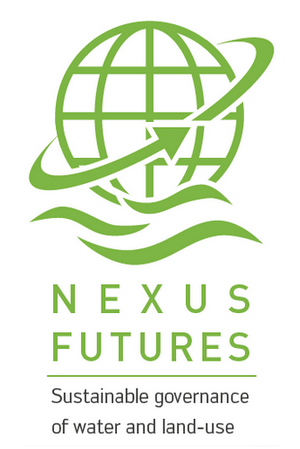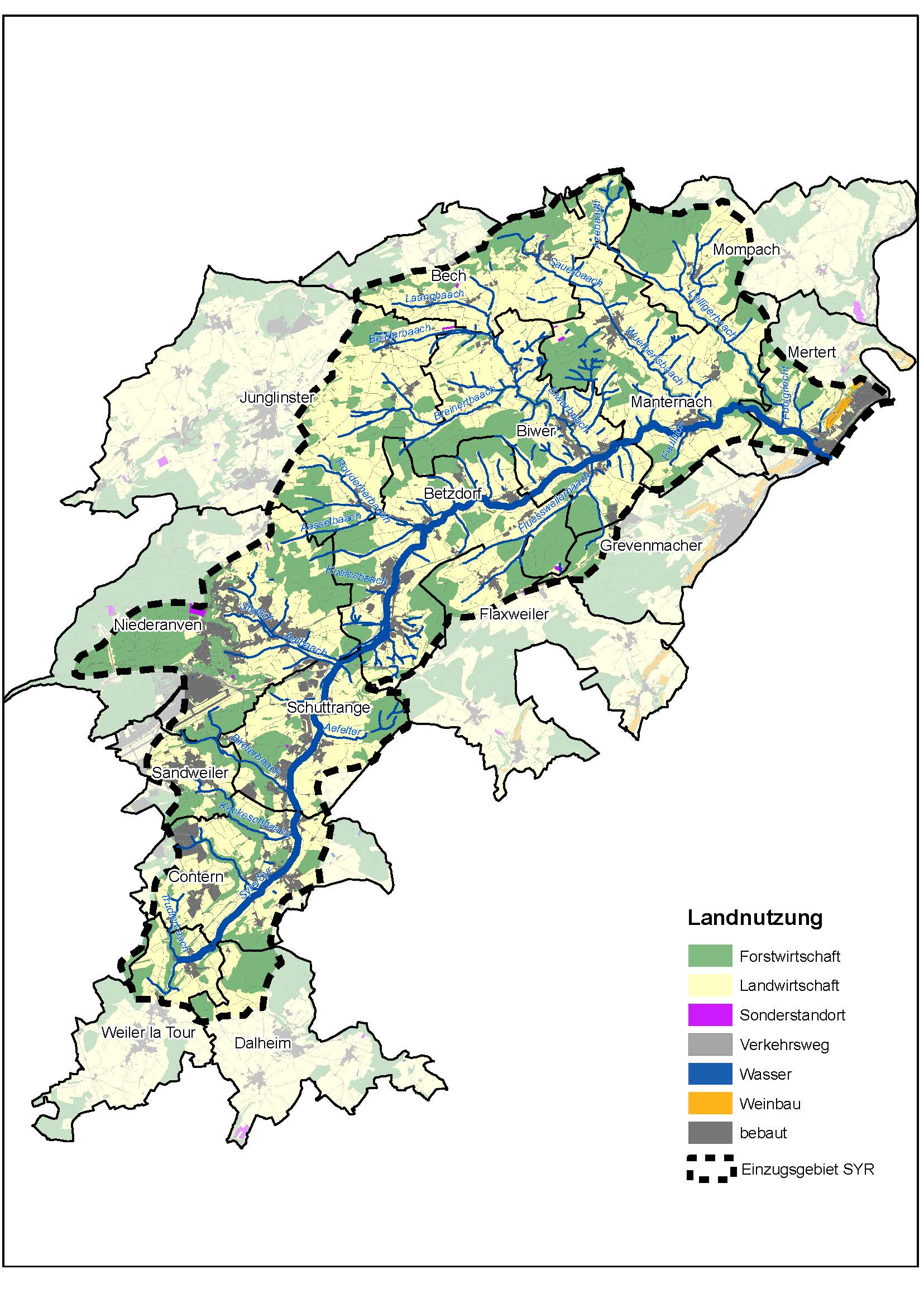The Syr
As part of our work around the Syr river basin we have conducted interviews and organized a workshop to examine local challenges from a systemic perspective and opportunities for action.
We worked in close cooperation with the Syr river partnership (part of the NGO natur&ëmwelt / Fondation Hëllef fir d’Natur), with citizens and stakeholders from municipalities, intermunicipal structures (“syndicates”), ministries and administrations, agricultural consultancies and other organizations.
The area: The Syr runs from its source in Syren to Mertert where it flows into the Moselle. The catchment area is 207 km2 and the total length of all waters is 234 km. About 35,000 people live in the municipalities of the river partnership: Bech, Betzdorf, Biwer, Contern, Grevenmacher, Junglinster, Manternach, Mertert, Niederanven, Sandweiler, Schuttrange and Weiler-La-Tour.
Although some three quarters of the land in the Syr river basin is used for agriculture and forestry some communities are increasingly densely populated.
Ecosystems: Within the Syr river basin, the biodiversity as well as water quality vary widely. In some places obstacles such as weirs restrict the natural movement of the fish populations. In many places, the river is walled off from its floodplains, which in certain areas contributes to increased flood risk. In some municipalities large amounts of nutrients (sometimes even untreated sewage, when capacities are insufficient) flow into the Syr and its tributaries (e.g. nitrates, phosphates and ammonium) via the sewage treatment plants due to increasing population as well as the nearby international airport. Soil erosion and livestock carry sediments and nitrates into the waters, in particular where intensive agriculture is practiced and fences are lacking. In some river sections, trout have disappeared entirely many years ago.
Due to these factors, the National Water Authority’s assessment of the overall water quality and biodiversity in the Syr river catchment is moderate (see presentation below).
In addition, many sources in the river basins are not usable for drinking water supply due to high levels of nitrate and pesticide contamination.
Protected Areas: The EU Water Framework Directive obliges Luxembourg to restore its water bodies to a “good ecological status” by 2027 at the very latest. This includes criteria relating to water quality and biodiversity. River restoration projects aim to contribute to reaching this goal. In addition, the river basin encompasses three protected Natura 2000 sites that pursue similar objectives.
Research and project activities: A case study about river restoration projects in the Syr river basin has been published in 2021 as part of a doctoral thesis (see part IV of the case studies). It examines developments and challenges concerning the existing nature reserve area “Schlammwiss-Brill” as well restoration plans between Mensdorf and Betzdorf. It provides insights into diverse factors that facilitate and hinder social learning and actionable knowledge for sustainability among diverse actors aiming to improve the condition of rivers and streams. Furthermore, it proposes a number of recommendations on what policy-makers, administrators and practitioners can do to foster cooperation and social learning (see also summary in German).
The case study is based on interviews and a collaborative stakeholder workshop that focused on challenges and opportunities for taking action to improve engagement with water, nature and soil in the river basin. The slow implementation of river restorations were one of the main action fields that emerged from the workshop.
Contact: Kristina Hondrila, University of Luxembourg


